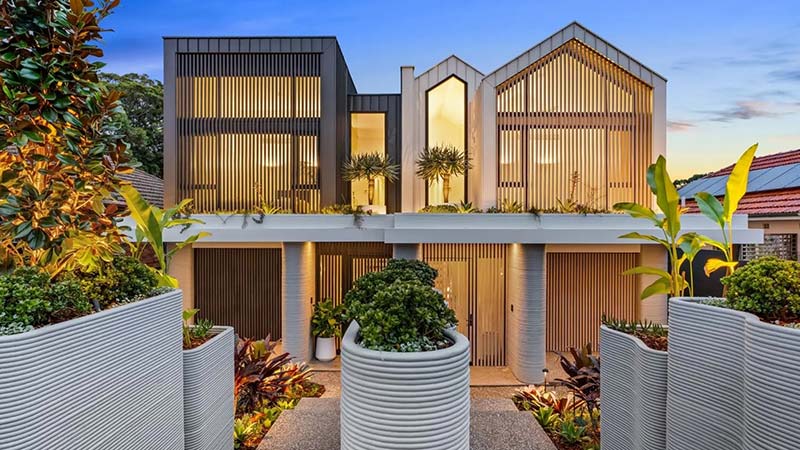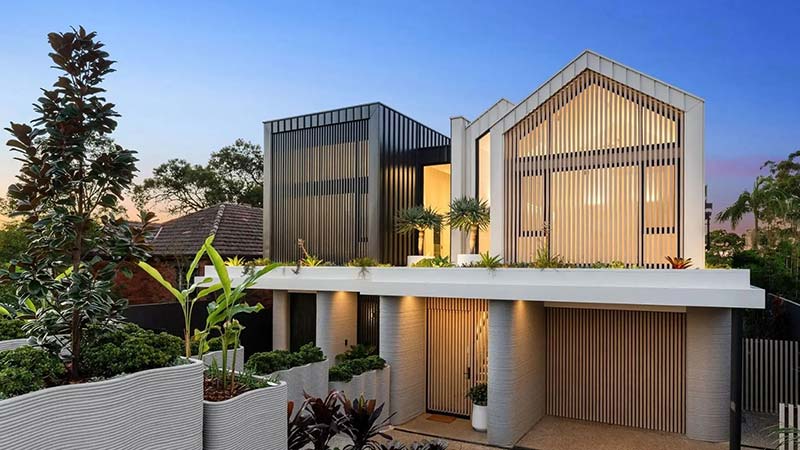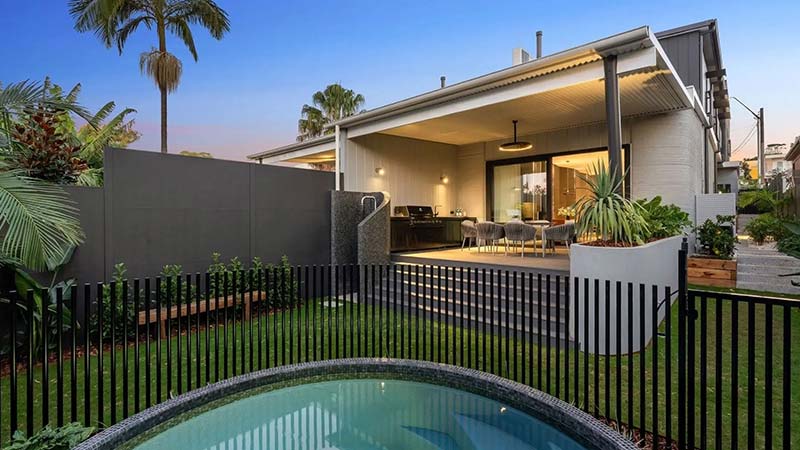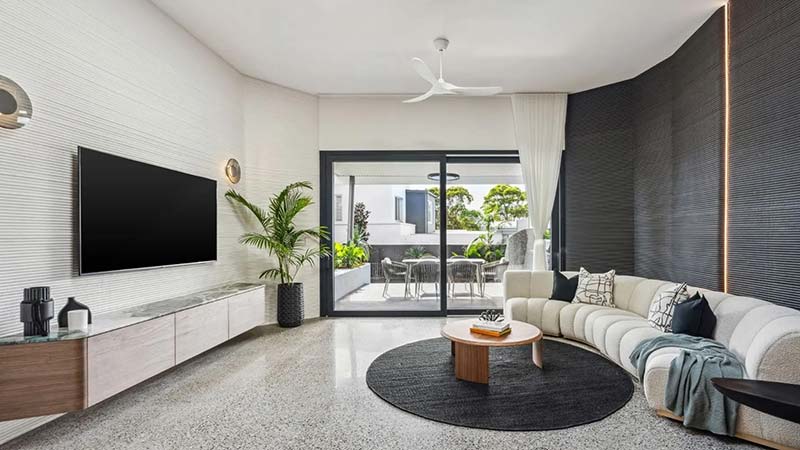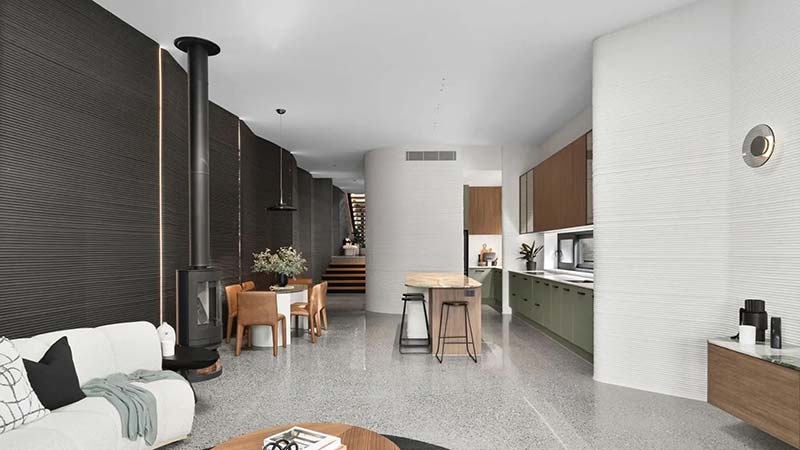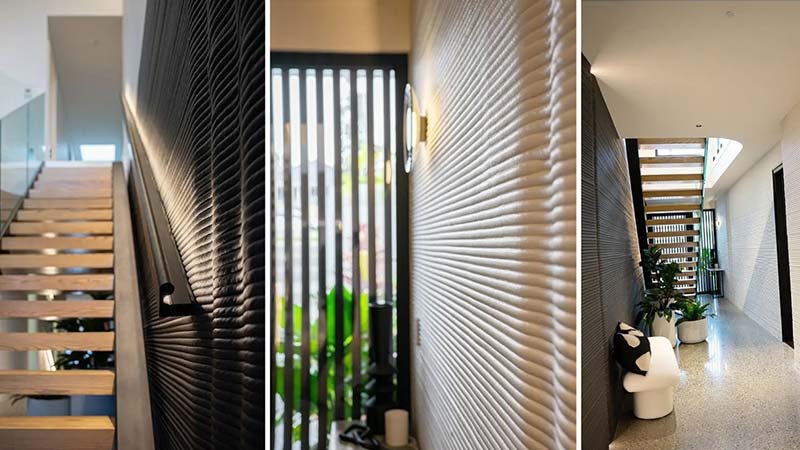Australia’s First 3D-Printed Duplex Halves Build Times

Contour3D has delivered Australia’s first full-scale 3D-printed homes, showing how 3D concrete printing technology can cut structural build times by 50 per cent and reduce costs by more than 20 per cent.
The Genesis duplex at Woolooware, New South Wales, combines 3D concrete printing for ground floors with lightweight modular construction for upper levels.
The project printed 1310sq m of internal and external walls using 140 tonnes of ContourCrete material at 1.3 tonnes per hour.
Contour3D founder Nick Holden said that while Genesis had a high-end finish and design, the technology worked equally well for projects of any standard.
The 3D printing process eliminates traditional construction waste by using only required materials with no offcuts, minimal transport requirements, and 100 per cent recycling of daily start-up and finishing waste.
The single material system comprising 40 per cent recycled content handles all internal and external walls, reducing complexity and supply chain dependencies.
The design freedom unlocked by the method is also a significant advantage for developers. Holden said “the printer doesn’t care” about adding parametric shapes, curves or cantilevers.
Complex architectural features cost no more to print than basic rectangular structures, while embedded voids and insulation channels reduce thermal bridging without additional trades or materials.
Technical challenges raised by the method required innovative solutions. Slab undulations and height variances forced manual adjustment of initial print layers, and wind conditions affected moisture curing levels.
Contour3D then developed automated slab scanning and self-correction software, as well as moisture control systems that adjust parameters based on weather station data.
“As the old saying goes—adversity drives innovation,” Holden told The Urban Developer.
The duplex achieved a 7.9-star energy rating, exceeding mandatory requirements. Versiclad’s modular panels for the upper level installed 96 wall panels and 290sq m of roof panels in six days with near-zero construction waste.
“Right now, even at a semi-early stage, we’re ... up to 50 per cent faster on the structural shell,” he said.
“As we dial in further automation, we’re targeting 70 per cent-plus reductions in structural build time.”
Cost savings are currently 20 per cent on overall builds thanks to reduced labour, materials and waste, excluding time savings from avoiding delays and trade conflicts that typically inflate budgets.
The technology reduces reliance on declining skilled labour pools while enabling truly localised, on-demand building that lowers embodied carbon.
Holden’s five-year vision involves decentralised, automated factories producing prefabricated 3D panel systems that are pre-plumbed, pre-wired and pre-insulated with windows installed, achieving lockup in under one week.
Holden believes Australia can lead global construction innovation through automated manufacturing that addresses housing shortages and labour constraints.
“Your competitors are already exploring it,” Holden said. “3D printing is a tool that solves real pain points—it’s faster, reduces risk onsite and can give you unique, marketable products that stand out.”
“We have the world’s best large-scale print layer quality and self-correcting technology built into our printers, making them easy to achieve a great result.
“Australia can lead the world in advanced construction tech. We’re uniquely positioned—we have a housing crisis, labour shortages, and high costs that demand a rethink, and although 3D printing may not be the only solution, it is a very viable one at scale.”
Nick Holden will join The Urban Developer’s flagship three-day conference, Urbanity, at the Gold Coast on July 29-31. For more details click here.
